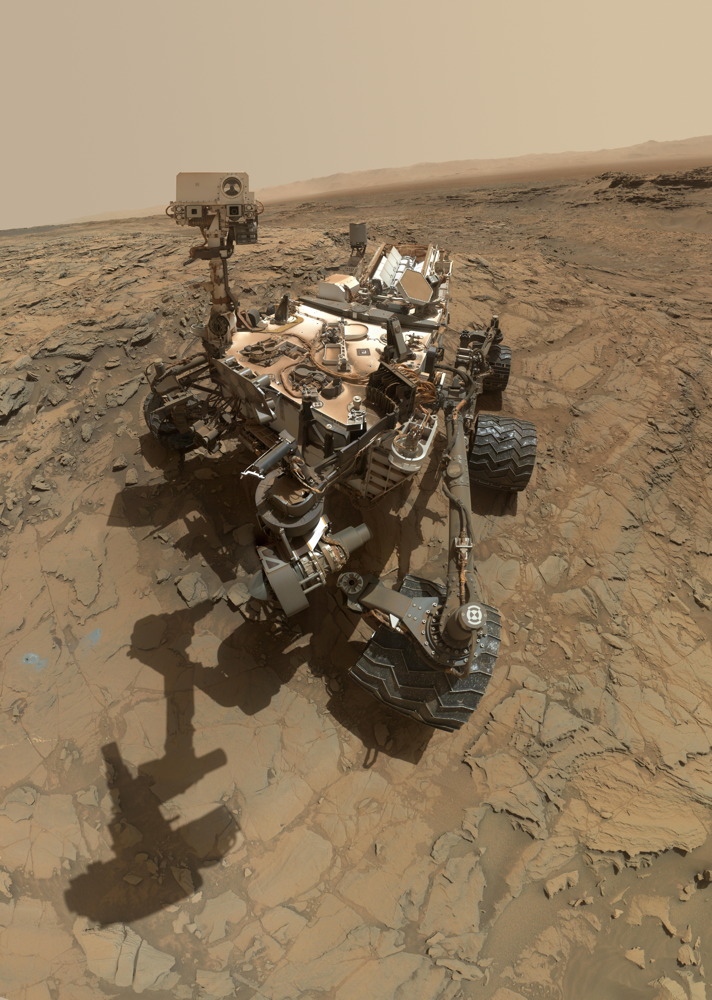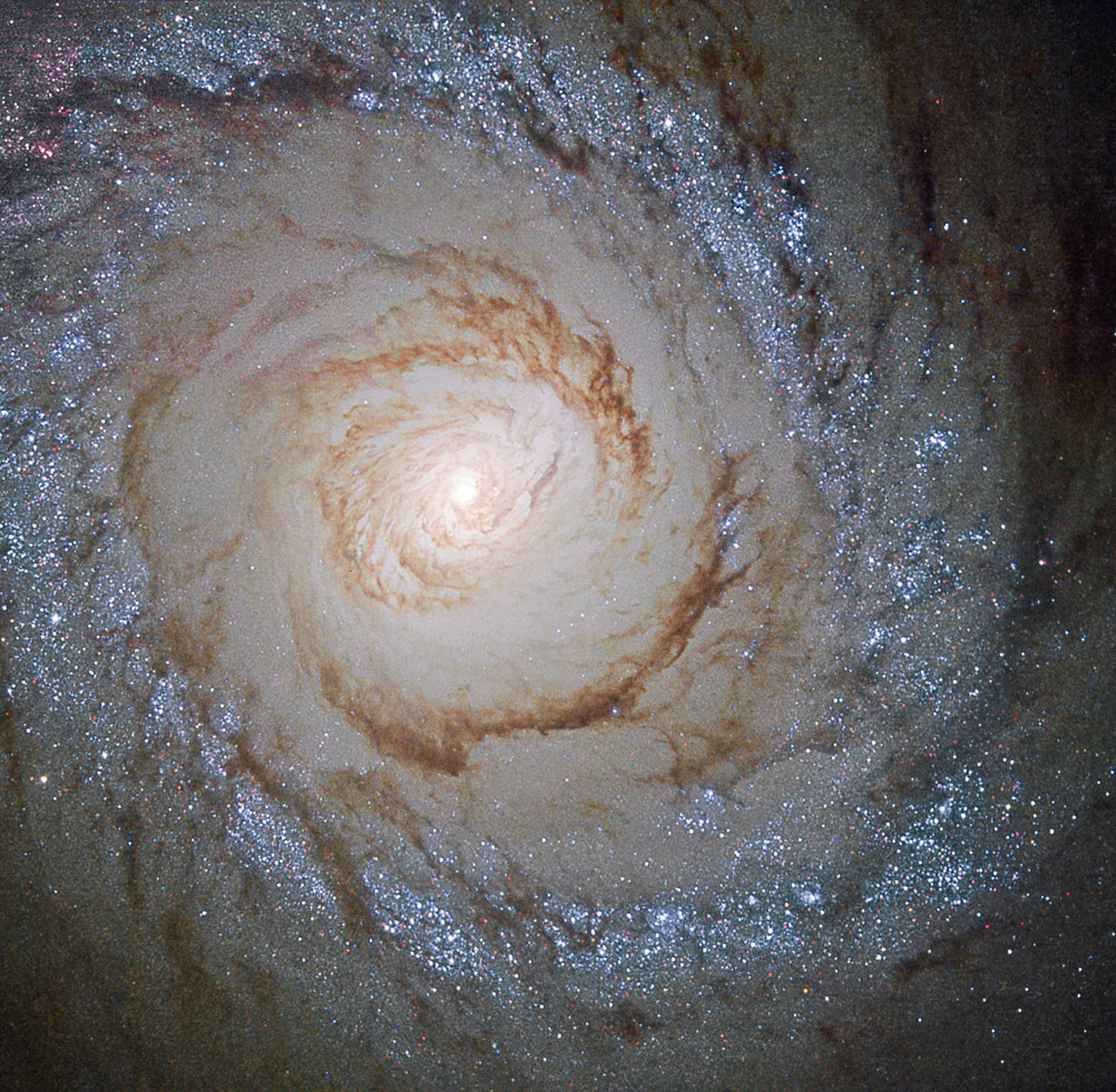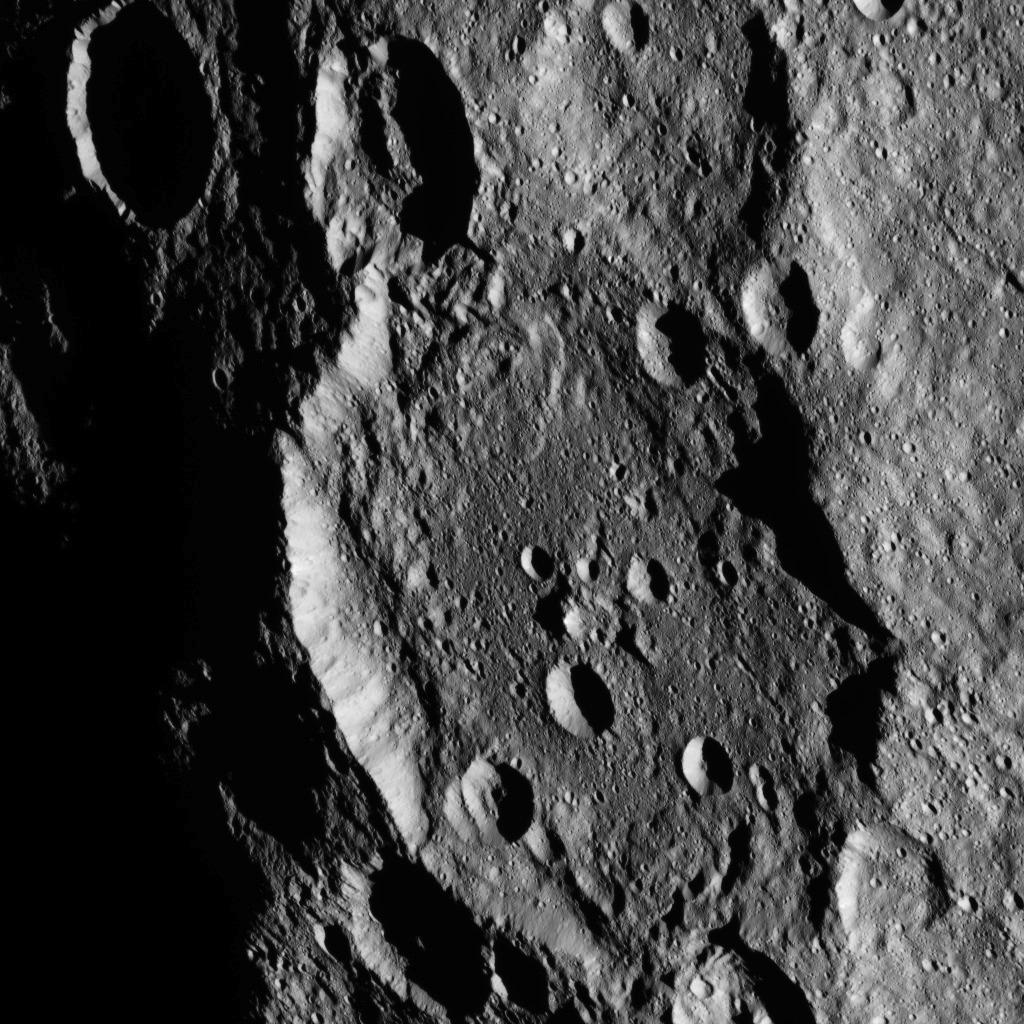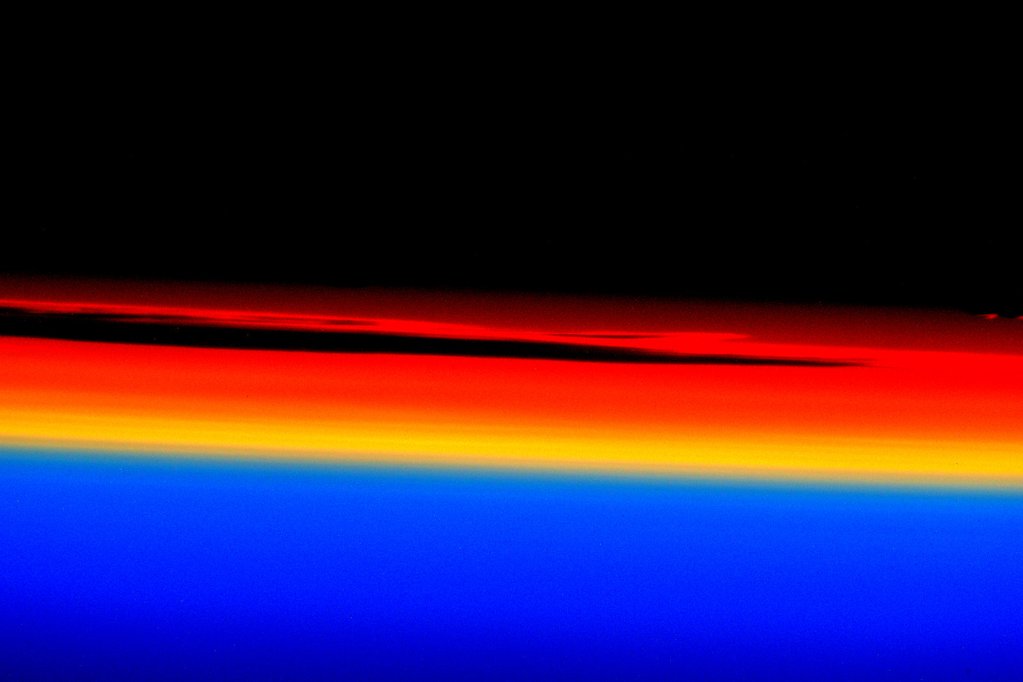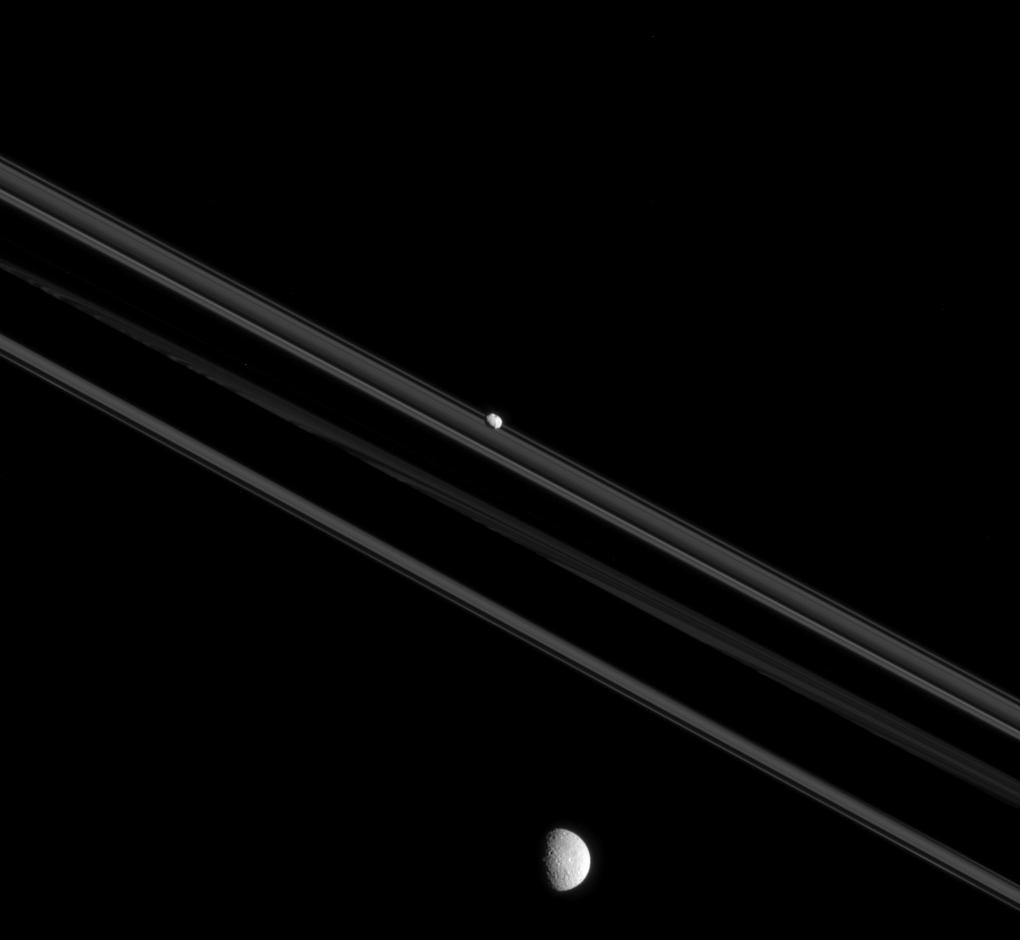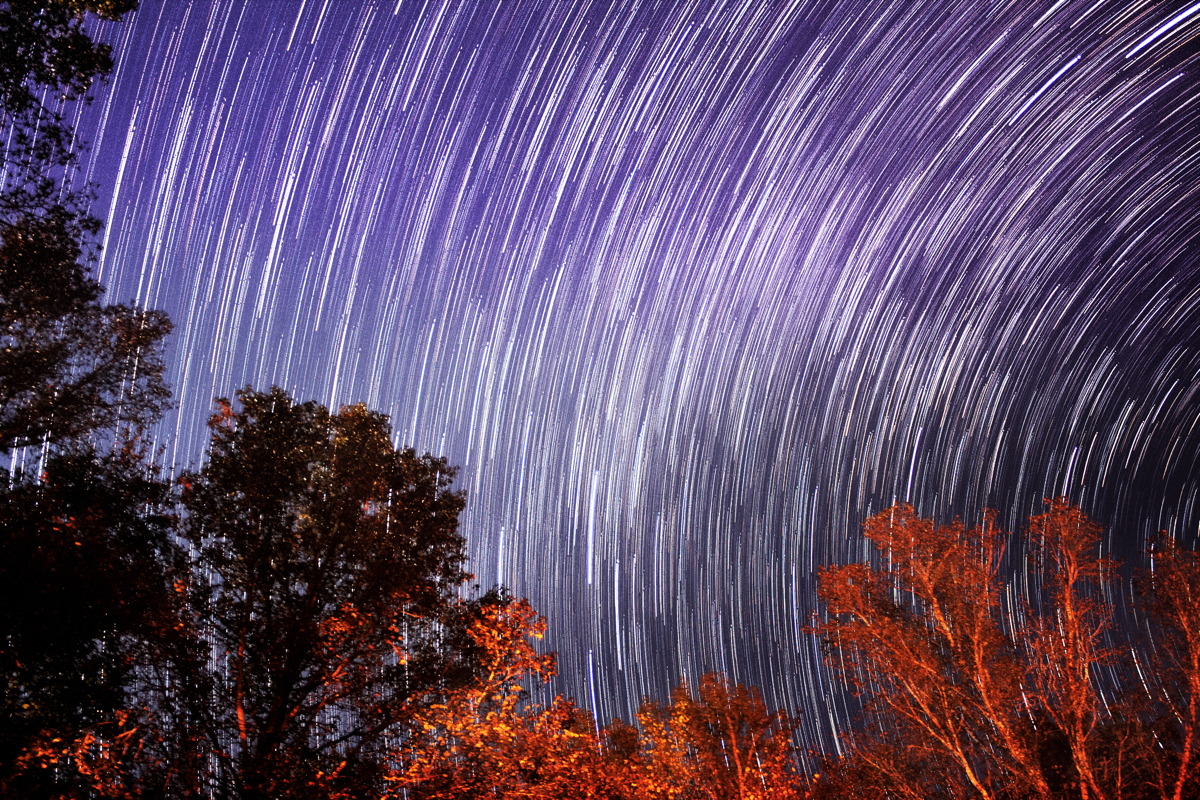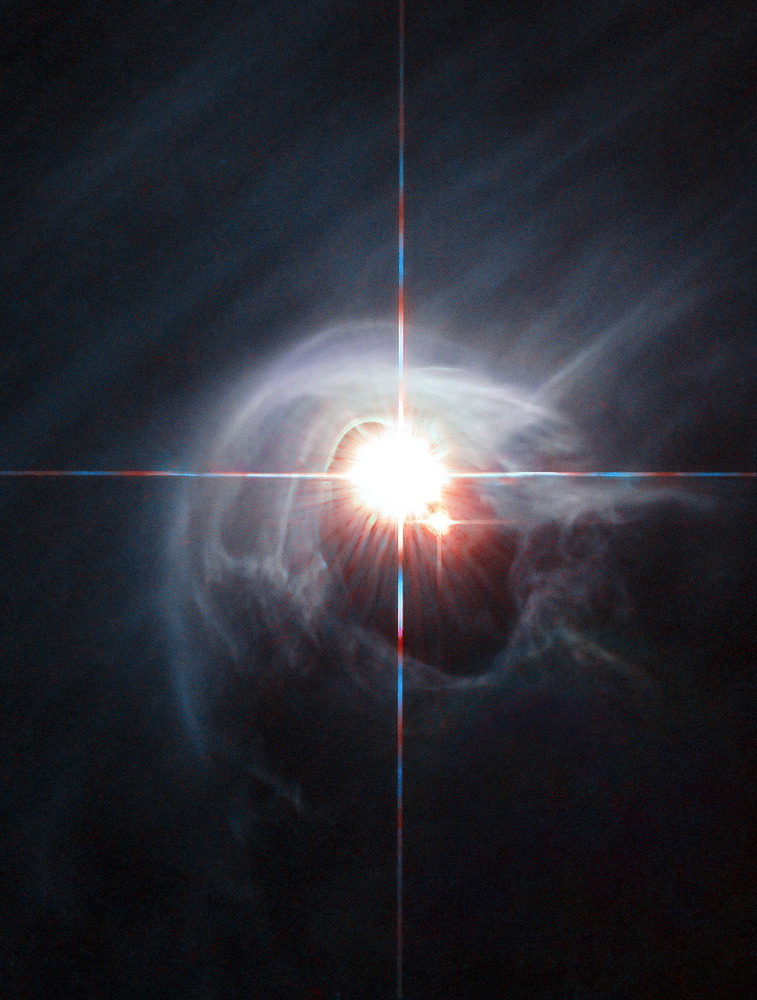Space Image of the Day Gallery (October 2015)
The Shadow of Your Arm
Thursday, Oct. 15, 2015: NASA's Curiosity Mars rover took photos of itself on Oct. 6, 2015, at the “Big Sky” site, where the rover had paused to drill into Mount Sharp for the fifth time. This image combines tens of images obtained by the Mars Hand Lens Imager (MAHLI) camera at the end of the rover's robotic arm. The robotic arm itself does not appear in the composite image, although the arm’s shadow does. The ground looks tilted but it is actually flat. The top and bottom of the photo were aligned with the ChemCam instrument atop the rover. In terms of scale, Curiosity's wheels are 20 inches (50 cm) in diameter and about 16 inches (40 cm) wide.
— Tom Chao
Get Lucky
Friday, Oct. 16, 2015: Astrophotographer Adam Woodworth sent in a photo of an aurora over Mt. Katahdin, Maine, taken Oct. 8, 2015. He writes in an email message to Space.com: "This is one of those shots that I've been dreaming about getting and I was lucky enough to have it all come together on a recent night! We were lucky that there was some good color along the river here, we got a break in the wind to get some nice reflections, and the sky cleared out just in time for a good flare-up of the aurora. Sometimes nature brings it all together! Due to the limitations of human vision in low light I couldn't see the aurora like this with my eyes, but I could see bright areas in the sky near the horizon, and occasionally I could see bright spikes, and for a few minutes the sky shimmered and that was amazing! The camera has no such limitations in the dark, and long exposures bring out all the detail and color."
— Tom Chao
Back in Time
Monday, Oct. 19, 2015: Greg Redfern, the "Sky Guy in VA" caught the Andromeda Galaxy, AKA M31, as his first photo of the fall. Andromeda Galaxy is the closest large galaxy to our own galaxy, the Milky Way. M31 lies off the northeast corner of the Great Square of Pegasus. Two companion galaxies also appear in the photo: M-110 to the left of Andromeda Galaxy, and M-32 to the right. Light from M31 takes 2.5 million years to arrive at Earth, so Redfern suggests that you "[g]et out when the sky is clear and go back in time by looking at the Andromeda Galaxy." Image submitted Oct. 8, 2015.
— Tom Chao
Starburst
Tuesday, Oct. 20, 2015: Galaxy Messier 94 lies about 16 million light-years away in the small northern constellation of the Hunting Dogs. New stars form at a high rate in the bright ring around Messier 94, which contains many bright young stars, giving rise to the name starburst ring for this feature. This unusually shaped star-forming region may have resulted from a pressure wave traveling outwards from the galactic center, compressing gas and dust in the outer region. The compression of material causes the gas to collapse into denser clouds. Gravity pulls the gas and dust in the clouds together until temperature and pressure grow high enough for stars to be born. Image released Oct. 19. 2015.
— Tom Chao
Taken Ceres-ly
Wednesday, Oct. 21, 2015: This image by NASA's Dawn spacecraft shows a part of dwarf planet Ceres’ southern hemisphere seen from an altitude of 915 miles (1,470 kilometers) on Sept. 20, 2015. Dawn mission launched on September 27, 2007, and the spacecraft orbited and explored the giant protoplanet Vesta in 2011-2012. Image released Oct. 19, 2015.
— Tom Chao
Brilliant Horizon
Thursday, Oct. 22, 2015: NASA astronaut Scott Kelly took this photo of sunrise — looking like an abstract painting — over Earth's horizon from the International Space Station on Oct. 21, 2015. On Twitter, he wrote, "#GoodMorning sunshine! The horizon was brilliant this morning. #YearInSpace."
— Tom Chao
Two Moons
Friday, Oct. 23, 2015: Cassini spacecraft’s narrow-angle camera caught Saturn’s moons Pandora (center) and Mimas (lower center) from a distance of approximately 485,000 miles (781,000 kilometers) on July 26, 2015. Pandora, a “small” moon which stretches 50 miles (81 kilometers) across, has an elongated, irregular shape. Mimas, at 246 m (396 km), is conidered a "medium-sized" moon, which formed into a sphere due to its own gravity imposed by possessing a higher mass. The shapes of moons can teach us about their histories. One explanation for Pandora's elongated shape and low density suggests that it formed by gathering ring particles onto a dense core. Image released October 12, 2015.
— Tom Chao
Breaking space news, the latest updates on rocket launches, skywatching events and more!
I’m Gonna Follow Your Star Trail
Monday, Oct. 26, 2015: Astrophotographer Jessica Strickland sent in a photo of star trails taken in Cusseta, Alabama, on Oct. 22, 2015. She mentions in an email message to Space.com that she went out hoping to photograph Orionid meteors, but did not catch any. She writes: “However, I did want to share this shot of the star trails with anyone who can appreciate it!” A long exposure makes the stars appear to trail over the Earth as it spins beneath the night sky.
— Tom Chao
Out of the Dust
Tuesday, Oct. 27, 2015: Two stars appear to shine through a ring of cascading dust. The star system, named DI Cha, actually consists two sets of binary stars forming a quadruple system. Dust surrounds the relatively young star system. The young stars mold the dust into a wispy wrap. This interaction between dust and star takes place in the Chamaeleon I dark cloud, one of three similar clouds that comprise a large star-forming region known as the Chamaeleon Complex.
— Tom Chao
Long, Long, Long
Wednesday, Oct. 28, 2015: A very long filament stretched at least halfway across the sun on Oct. 20-22, 2015. Filaments consist of elongated clouds of plasma above the sun, tethered by magnetic forces. Unstable, they usually break apart in less than a week, though they can exist longer. Filaments appear darker than most of the sun’s surface when viewed in extreme ultraviolet light, as in this image.
— Tom Chao
